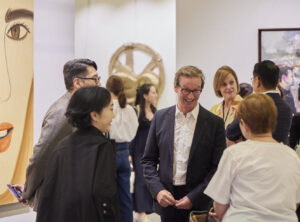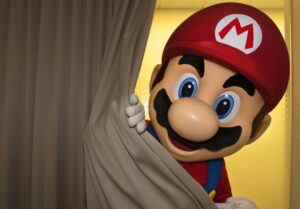Milan’s Ascent in the Global Art Scene
Milan has always been a city of systems. A city of tailoring and timing. A city that understands the choreography between finance and form. For decades, it has dominated fashion, architecture, and industrial design—but only recently has it begun to step confidently into the world of contemporary art.
Now, with Austrian powerhouse gallerist Thaddaeus Ropac preparing to open a new gallery in the city’s historic Palazzo Belgioioso, the conversation is shifting. Could Milan, a city once peripheral in the global art market, be on the verge of becoming its next major hub?
This moment isn’t happening in a vacuum. With Brexit’s aftershocks, growing fatigue with saturated cities like New York and Paris, and a noticeable migration of wealth into Italy due to favorable tax laws, Milan is emerging as more than just a design capital—it’s becoming a cultural market force.
In this essay, we examine the key factors behind Milan’s transformation:
- The strategic expansion of galleries like Galerie Thaddaeus Ropac.
- The influence of Miart, Milan’s increasingly international art fair.
- The economic shifts bringing collectors to Italy’s financial heart.
- The opportunities—and pressures—facing local cultural institutions.
Through these lenses, we evaluate the possibility of Milan ascending from promising city to enduring art world capital.
Thaddaeus Ropac’s Milan Gamble: A Long-Term Vision
Why Milan, and Why Now?
In fall 2025, Galerie Thaddaeus Ropac will open a new 3,000-square-foot gallery in the heart of Milan. Situated in the neoclassical Palazzo Belgioioso, the space will include indoor exhibition areas and outdoor sculpture installations in the adjacent Piazza Belgioioso.
For Ropac, this isn’t a seasonal pop-up or a temporary experiment. It’s a commitment to a city he sees as underleveraged in the global art dialogue. As he told Artnet News:
“We always felt we wanted to be the ultimate European gallery. With our presence in the UK, France, and Austria, Italy was just missing.”
Ropac’s move is not only strategic in geographic terms—it’s symbolic. It signals confidence in Milan’s infrastructure, its collectors, and its future.
A New Wave of Collectors
Perhaps the most compelling reason for this expansion lies in Milan’s changing demographics. In recent years, Italy has introduced a flat-tax regime that allows wealthy individuals to pay a capped annual tax of €100,000 to €200,000—a major draw for expatriates from the UK, U.S., and beyond.
This has produced a quiet transformation: a rising population of high-net-worth individuals settling in Milan, looking for ways to engage culturally and invest locally. Ropac notes:
“You have more international people than Italians moving there. Milan is becoming the ultimate place where everybody wants to be.”
And where wealth gathers, galleries follow.
Miart and Milan Art Week: Catalysts for Change
Miart 2025: More Than a Fair
The annual Miart fair, now in its 29th edition, is no longer a minor event on the European circuit. The 2025 edition, held April 3–6, brought together 179 galleries from 31 countries and embraced the theme “among friends”, drawing inspiration from Robert Rauschenberg’s collaborative approach to art.
Significant moments included:
- High-profile returns from Sadie Coles HQ, Victoria Miro, and Esther Schipper.
- Sales of major works, including a $320,000 Ugo Rondinone sculpture and a €300,000 Giorgio de Chirico painting.
- A focus on emerging markets through the Portal section, which spotlighted artists from Ghana, Colombia, and Peru.
Miart isn’t just a fair—it’s a momentum builder, offering galleries a reason to enter Milan and collectors a reason to stay.
Institutional Growth
Milan’s rise is also supported by a reinvigorated cultural infrastructure:
- Fondazione Prada continues to challenge norms with interdisciplinary shows that draw both curators and collectors.
- Palazzo Citterio, decades in the making, has finally opened, filling a much-needed gap in Milan’s contemporary art museum landscape.
- Museo del Novecento is undergoing a major expansion, with a new wing scheduled to open in 2026.
These institutions legitimize Milan’s global ambitions. But some critics argue the programming leans toward blockbuster retrospectives, leaving less room for experimental voices.
Challenges: Gentrification, Real Estate, and Regulation
A Market Under Pressure
Milan’s art scene may be growing, but it’s also tightening. Since the Expo 2015 boom, real estate prices have surged, pushing out the very mid-size and emerging galleries that make an ecosystem resilient.
Art neighborhoods like Lambrate, once havens for risk-taking spaces, are being overrun by commercial development. Meanwhile, gallery closures have continued:
- Peres Projects, once hailed for its Milan presence, exited the city after just three years.
- Lisson Gallery shuttered its Milan branch in 2017, citing shifting priorities and high overhead.
Tax Trouble: VAT on Art Sales
Italy’s tax policy still poses a barrier. The 22% VAT on secondary-market art makes Milan less competitive than Paris (5.5%) or Berlin (7%). Though EU-wide policy updates in 2025 may eventually pressure Italy to align with peers, there’s been little local political will to change it.
For Milan to become a sustainable market hub, fiscal reform will need to accompany cultural investment.
The Road Ahead: Can Milan Sustain Its Momentum?
Design Meets Art: A Hybrid Identity
Milan’s design DNA may be the key to its next evolution. Events like the Salone del Mobile bring global audiences to the city, many of whom are also potential art buyers. The crossover appeal between design, architecture, and visual art could be a defining trait of Milan’s market identity.
Galleries like Ropac’s are poised to bridge those worlds, using physical space and programming to reimagine what a gallery can be—public, elegant, and deeply Milanese.
New Generations, New Markets
Milan is also drawing younger buyers: tech entrepreneurs, fashion creatives, and diaspora collectors, particularly from Africa and South America. These demographics demand transparency, mobility, and cultural relevance—challenges the traditional art market has been slow to meet.
Milan’s flexibility and openness could give it a competitive edge here.
Impression: Milan’s Art Market Future—Hub or Hype?
As of 2025, Milan is no longer an outsider in the art world. It’s inside the conversation, and with figures like Thaddaeus Ropac investing long-term, its cultural stock is rising.
But to truly become a global hub, Milan must address three key areas:
- Policy: Without VAT reform, growth will remain uneven.
- Access: Gentrification must be managed to preserve diversity in the art scene.
- Innovation: Institutions and galleries alike must take creative risks, not just commercial ones.
In Ropac’s words:
“Milan has a moment. We want to be there as one of the first international galleries.”
The future remains unwritten. But one thing is clear: Milan is no longer waiting in the wings. It’s walking onto the world stage, slowly, stylishly—and maybe, just maybe, to stay.
No comments yet.








